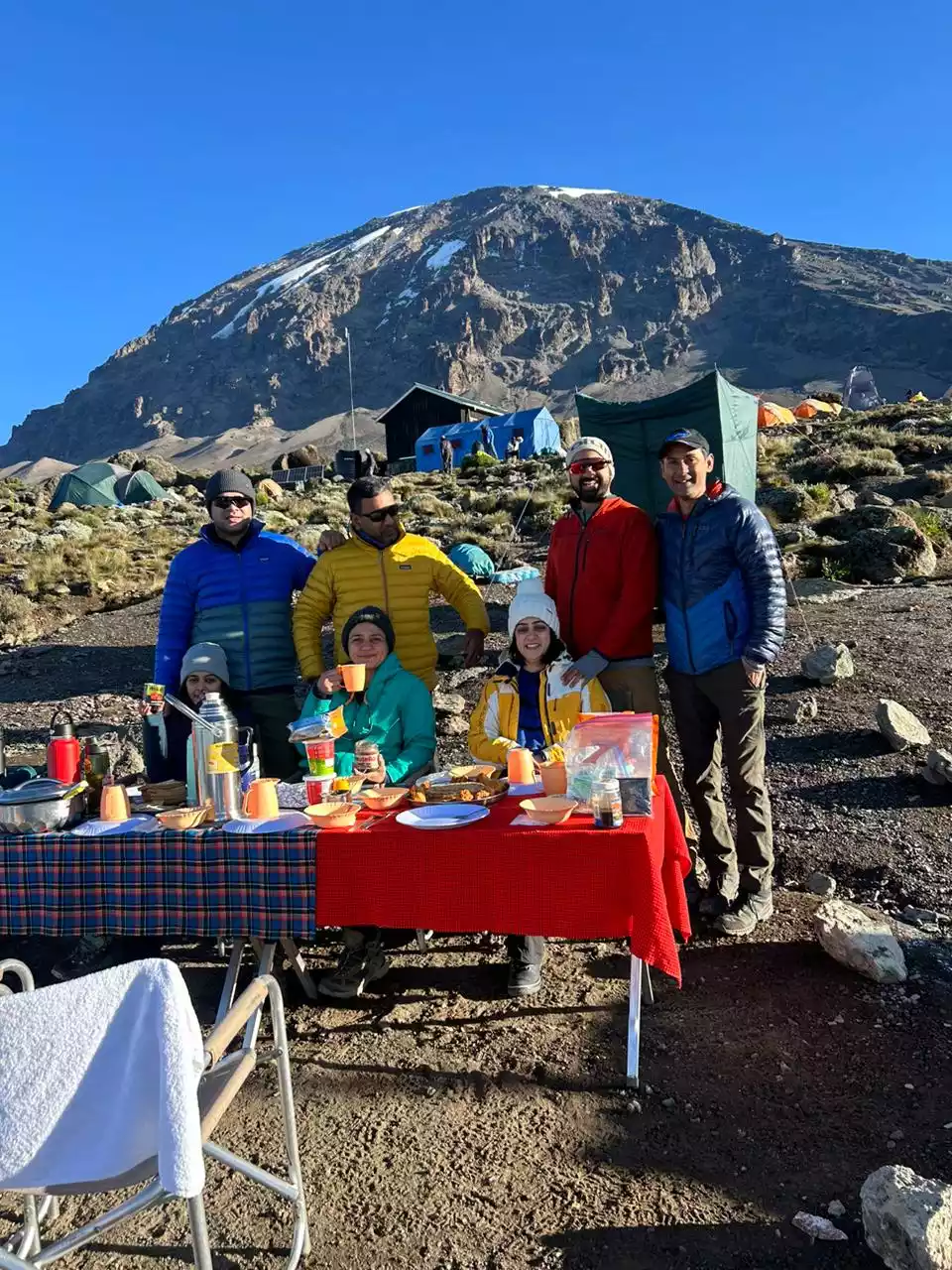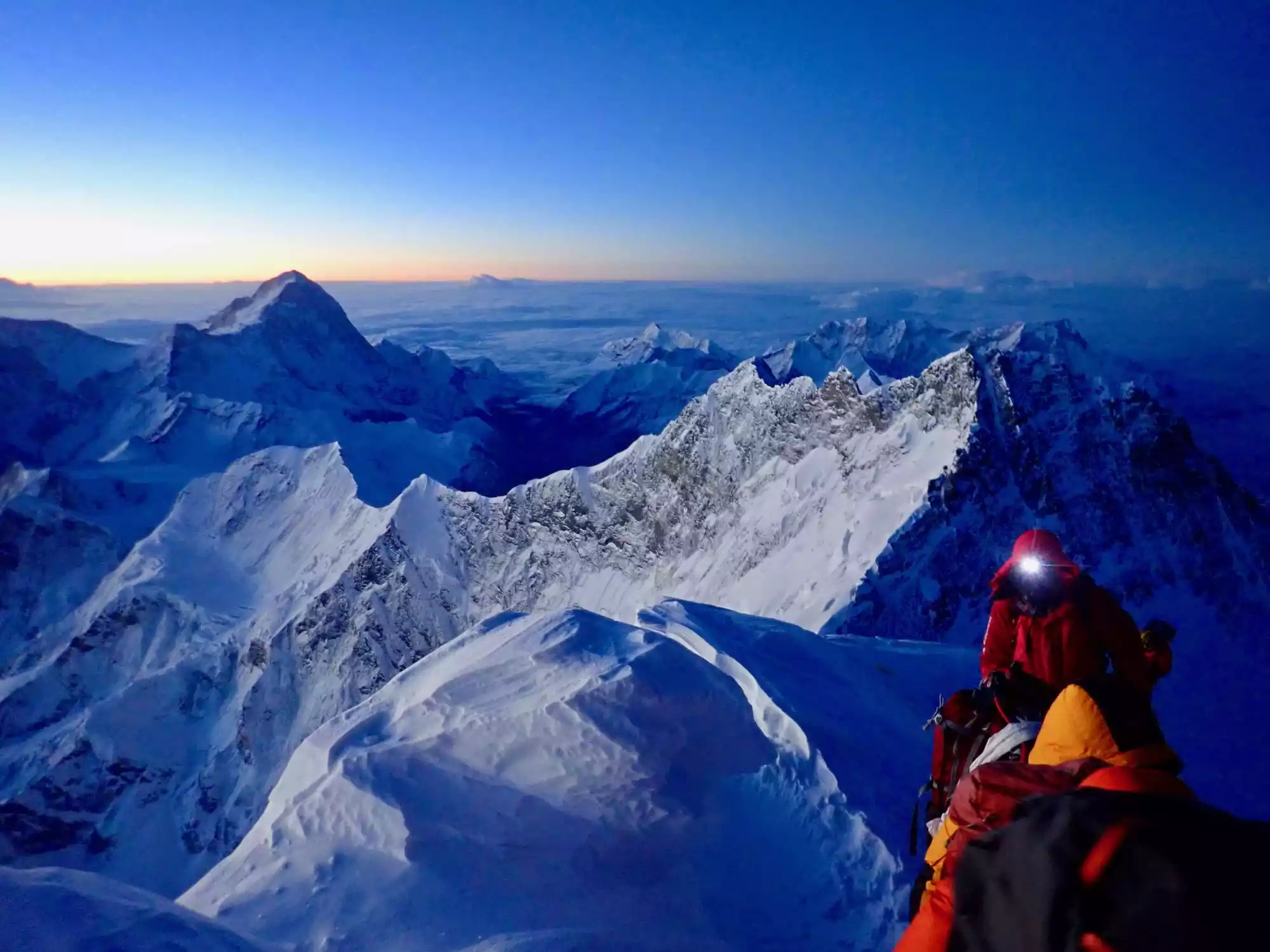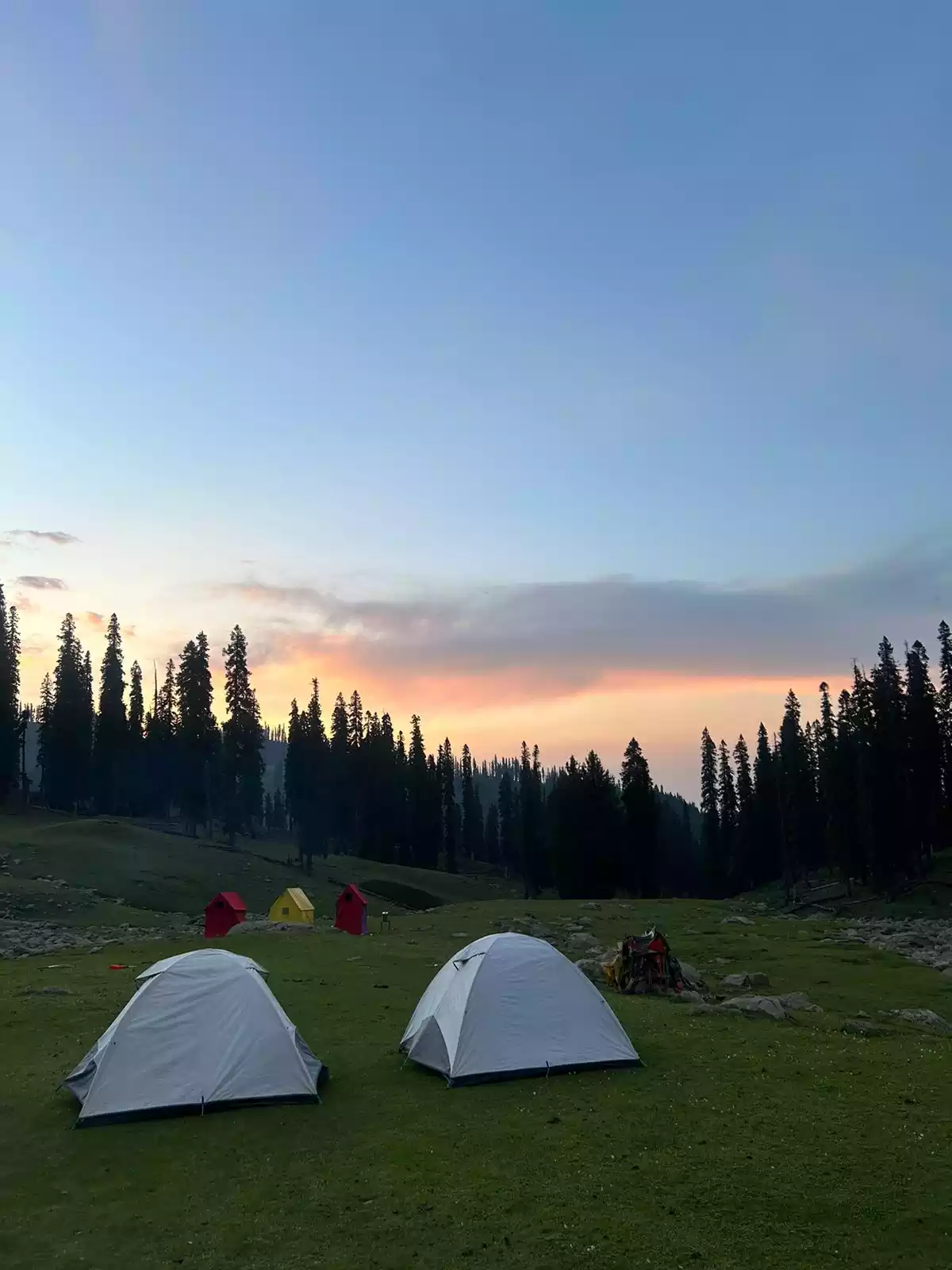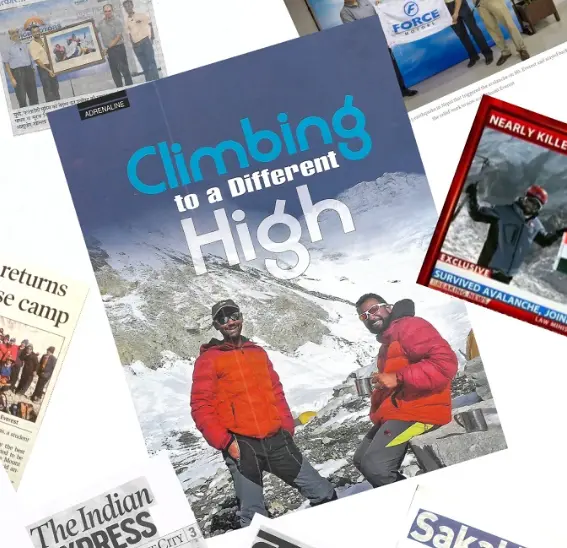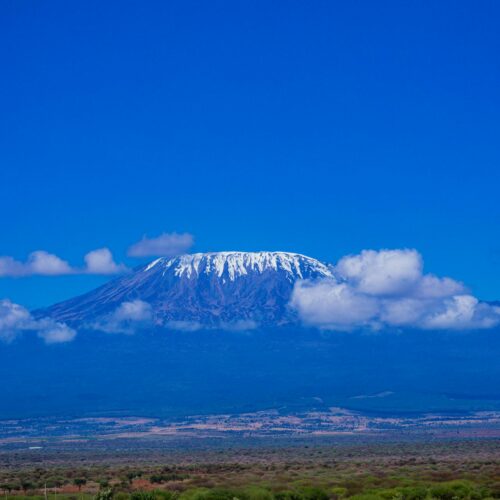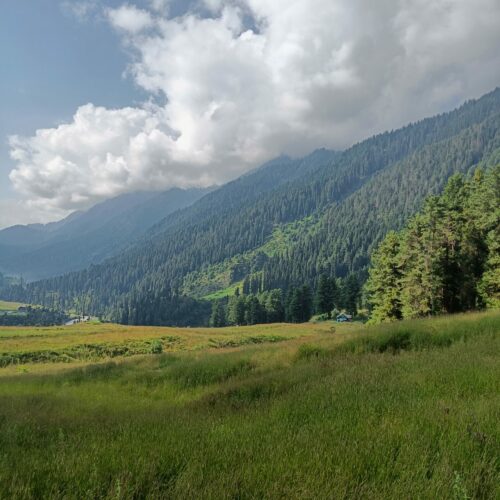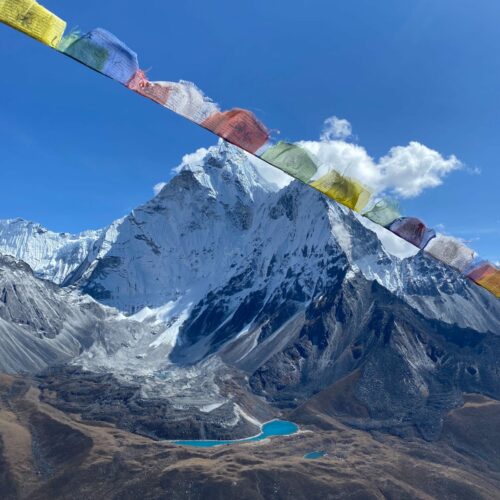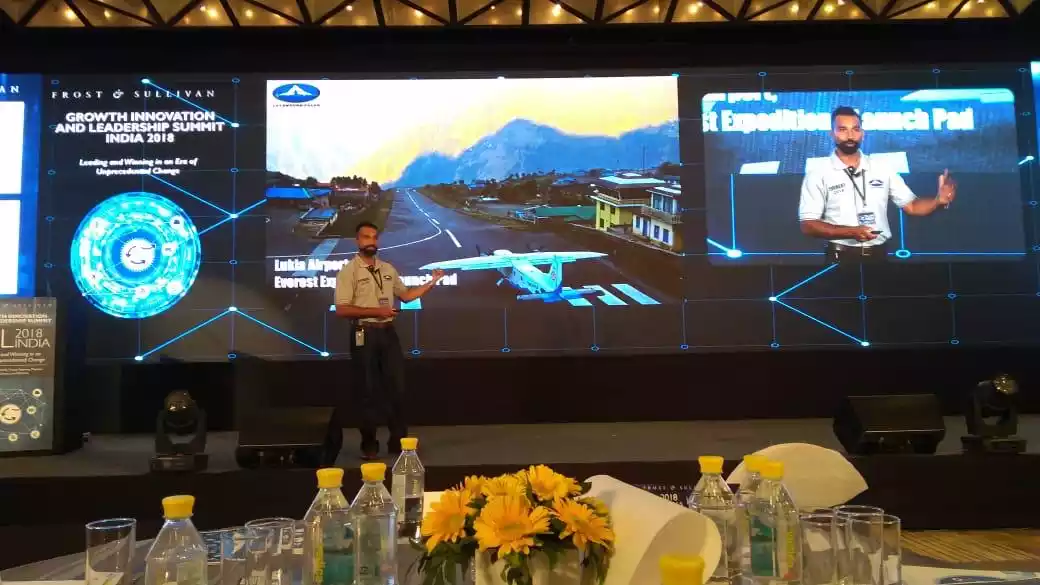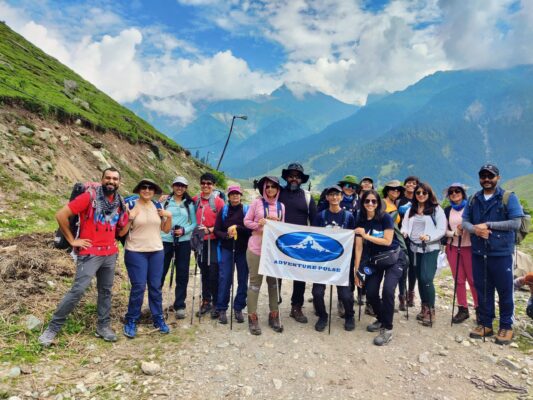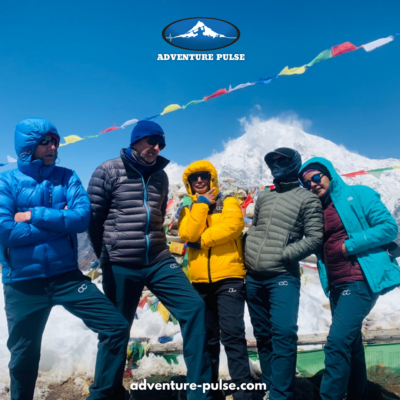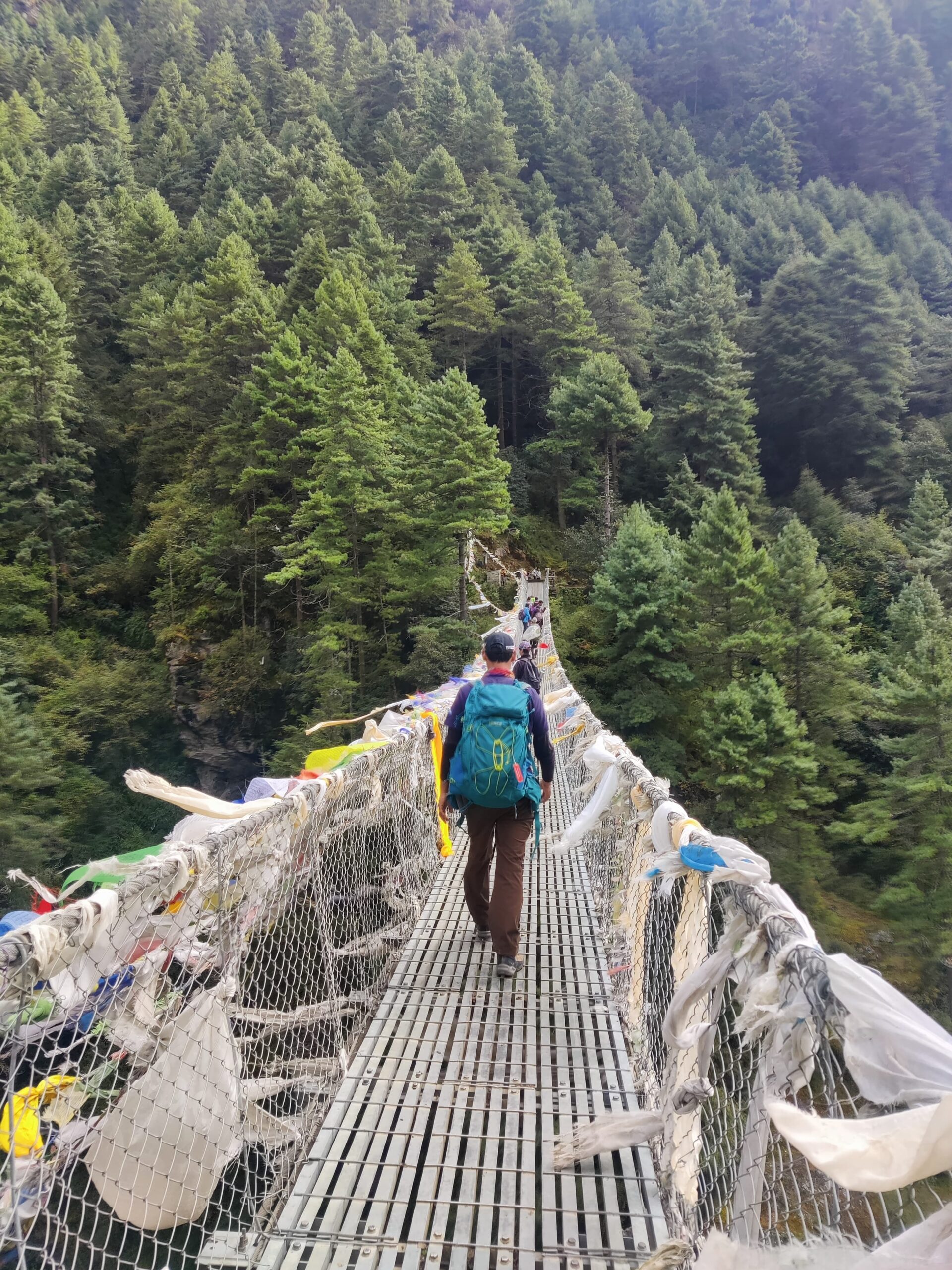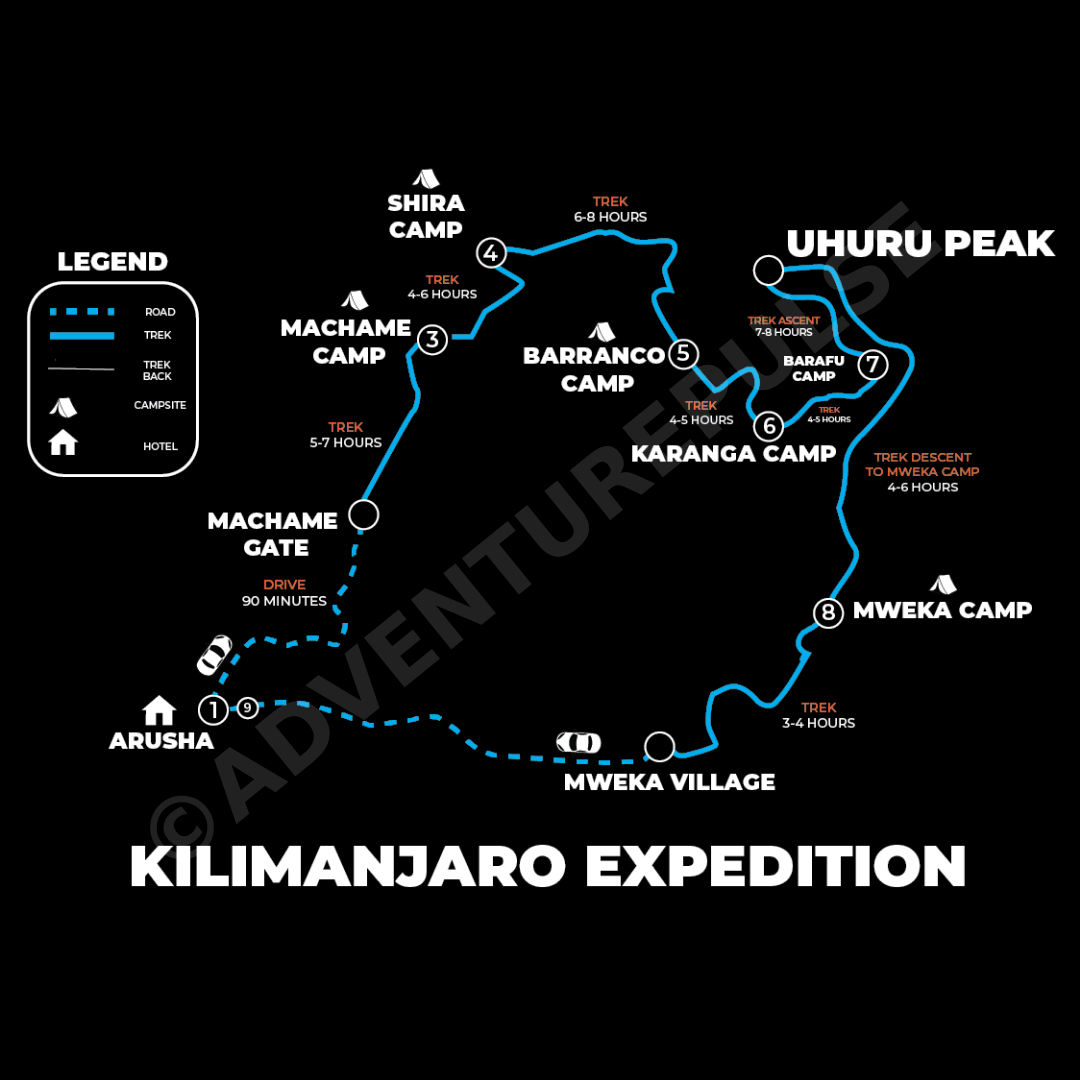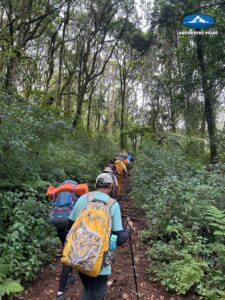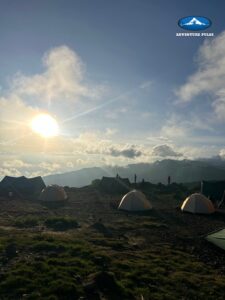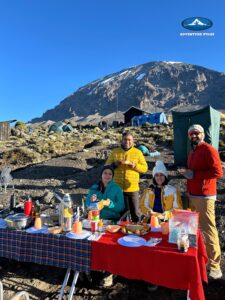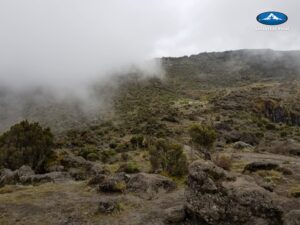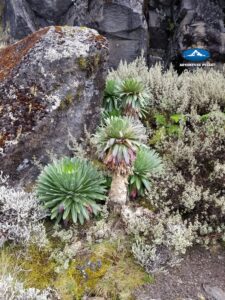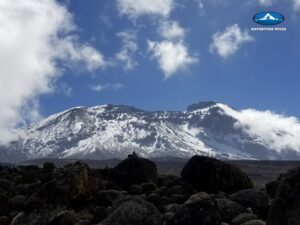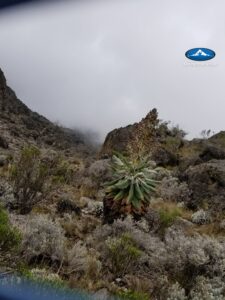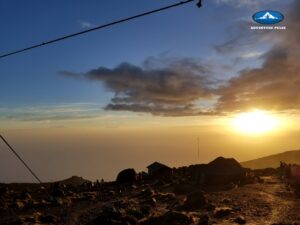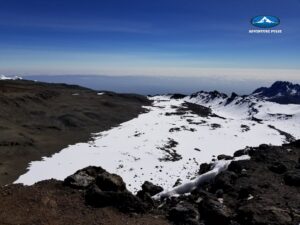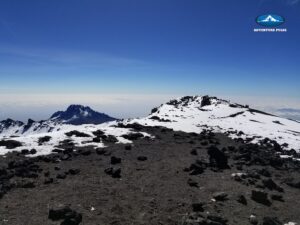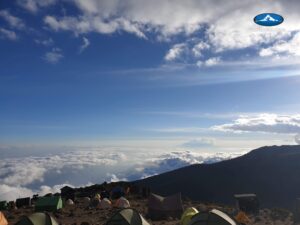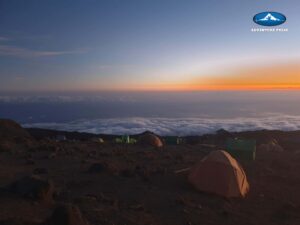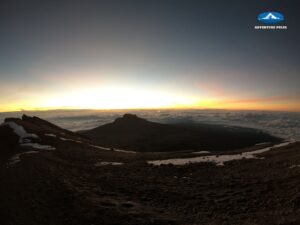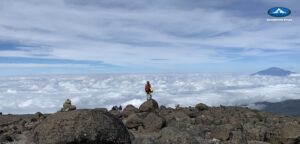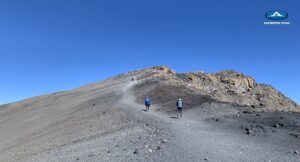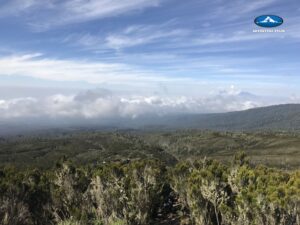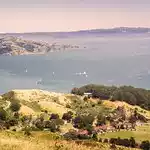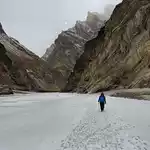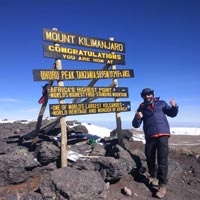Brief Itinerary
- Day 1 - Arrival at Kilimanjaro International Airport.
- Day 2 - Extra Day in Arusha for acclimatisation; Rest and recovery from jet lag.
- Day 3 - Drive to Machame gate and enter Kilimanjaro national park. Complete registrations and trek to Machame Camp.
- Day 4 - Machame to Shira Camp (3810m)
- Day 5 - Shira Camp to Lava Tower to Barranco Camp (3976m)
- Day 6 - Barranco Camp to Karanga Camp (4995m)
- Day 7 - Karanga Camp to Barafu Camp (4673m)
- Day 8 - Barafu Camp to Uhuru peak (5895m) - Descend to Mweka Camp (3068m)
- Day 9 - Final descend; Transfer to Arusha.
- Day 10 - Departure from Kilimanjaro International Airport.
Inclusions & Exclusions
Trip Cost Includes:
- Airport pick up and drops on arrival.
- Hotel Stay on a Bed & Breakfast plan.
- All transportation arrangements.
- Kilimanjaro National Park Permit
- 03 person Dome mountain Tent, Double occupancy.
- Staff Inclusions:- One Guide & Assistant Guide, One Cook and Assistant
- Cook, Two Porters per client
- Crisis management apparatus – VHF 2-way radio, basic first aid kit and anon call vehicle.
- Weight Restriction per trekker – 12kgs
Trip Cost DOES NOT Include:
- Lunch and Dinner while in the town/city.
- Tips to porters and staff.
- Airfare to and fro.
- Any Kind of Personal Expenses or Optional Tours / Extra Meals Ordered
- Tips, Insurance, Laundry, Phone Calls
- Any Kind of Drinks (Alcoholic, Mineral, Aerated)
- Soft or hard drinks, starters.
- Anything not specifically mentioned under the head "Prices included".
- International Flights
Things to carry
Download as PDFExtreme temperature variations, high altitude, snow glare & proximity to sun are certain factors which necessitate the need for proper mountaineering equipment. In order to enjoy your experience in the mountains, we have recommended that you carry the following with you.
Apparel
- Thermal Inners - At least 1 pair of Top and Leggings
- 6-8 t-shirts or long-sleeve shirt (cotton / dryfit)
- 2-3 pairs of trekking pants (no denim!)
- 1 Sweater/Sweatshirt
- 1 Fleece Jacket
- 1 Down Jacket
- 1 Waterproof Layer like raincoat or wind-cheater
- 1 pair of hiking boots
- 1 pair of comfortable sandals/floaters/sneakers
- 6-8 pairs of cotton socks (for day)
- 2 pairs of thick/woollen socks (for night)
- Gloves - liner and outer
- Sun hat
- Woollen cap
- Buff
Accessories
- Duffel bag / Rucksack (60L+)
- Daypack / Backpack (20-30L capacity)
- 2x 1L Bottles (to carry drinking water)
- Lunchbox
- Torch + Batteries / Headlamp
- Trekking Poles
- Sunblock
- Sunglasses
- Moisturiser
- Hand Sanitiser
- Personal Medical Kit
- Personal Toiletries Kit
- Trail Snacks/Trail Mix
Fitness
Download as PDF- There are three main aspects of training to focus on – strength training, cardiovascular training, and trekking + trekking alternatives.
- Strength training involves training different muscle groups, so that they can become stronger. There are different exercises for each muscle group, and working them all out 2x-3x a week should be enough to help you get comfortable trekking.
- Legs / lower body - exercises like squats, glute bridges, step ups and leg presses with help you develop stronger muscles in the lower body.
Core - Exercises like planks, bicycle crunches and leg raises can help with core stability; Pilates is also a core-intensive type of workout that will help.
Upper body - Bodyweight exercises like push-ups, pull-ups and dips will help develop these muscles. You can also use resistance bands or light weights to develop them further.
- It’s vital to do plenty of cardio training before your trek, so that you can get the most out of your experience
- Running - This is the most recommended form of cardio activity, as it activates a lot of the same muscles as trekking. Being able to run 10km in 60 minutes will allow you to get the most out of your trek.
Cycling / Swimming - If you have knee issues, or don’t enjoy running, you can also opt for cycling and swimming. Being able to cycling 30-50km or swim for 30-40 minutes, thrice a week, should be good to help you with treks like EBC.
HIIT training / Crossfit - Another option to level up your cardio training is to opt for high intensity aerobic exercises like HIIT or Crossfit, 2-3 times a week
The aim is to get your heart rate up, so you do not get winded on long days of trekking
- Hiking
Try to get outdoors and go for a hike on the weekends! Uphill trails of 4-8 kilometres are will help you get used to trekking. Make it a point to carry a loaded backpack, and walk in your trekking shoes.
- Hiking Alternatives
Climbing stairs, and using the treadmill or stairmaster on an incline, will help prepare you for treks. Make it a point to carry a loaded backpack so that you can get used to the extra weight; and use your trekking boots, so that you can break them in and walk comfortably.
- If you’re confused with all this information, no need to worry! The most important thing with training is consistency, and staying injury-free. Your training week should ideally have
Strength training - 3 sessions
Cardio training - 3 sessions
Hiking - 1 long session, best on the weekends
Rest and stretching - at least 1 day
FAQs
Kilimanjaro
What are the staying arrangements for this trek?
This format is an ‘Expedition- Style’ format of trekking prevalent in Africa. The entire expedition will be completely self-sufficient with a separate Kitchen Tent and Staff, Dining Tent, Toilet Tent and 3- Man Dome shaped tents in which trekkers will be accommodated on double occupancy. For the 7 Days / 6 Nights, life will be simple as you follow the trail, and nights will be beautiful, as you fall asleep listening to the sounds of Africa. On landing at Kilimanjaro International Airport, you will be transferred to the hotel in Moshi Town. We will be spending two nights here to ensure that you completely recover from your travel journey before we head to Kilimanjaro and enter the national park at the Machame Gate. Feel free to leave any additional luggage at this hotel, as we will be coming back here after the trek for one night, before you continue onward with the rest of your journey either back home or to a Safari adventure.
What kind of physical shape do I need to be in, to undertake this trek?
You need to be in good physical shape to trek especially on Kilimanjaro. Though distances are not much, it is important to understand that on Kilimanjaro, every day involves substantial height gain. It’s a challenging trek and does demand good physical fitness and some bit of prior trekking experience. Please refer to our physical fitness document for more details on this topic.
What are the entry and exit points for this trek?
One needs to fly into Tanzania and reach the Kilimanjaro International Airport located between the city of Arusha and Moshi Town. There are regular International connections flights from Delhi, Mumbai and Bangalore. On your arrival at the airport, you will be picked up and driven directly to the hotel in Moshi Town where an Adventure Pulse representative will greet you. We plan to spend two days at Moshi Town, before we move on to Machame Gate on Day 3 for the actual leg of the trekking expedition. After the 7 Day / 6 night Trek, we exit from the Mweka Gate and make our way back to the hotel in Moshi. The next day, you will be transferred back to Kilimanjaro International Airport where you can catch your International flight back home.
Do I need any special equipment / climbing gear for this trek?
Any kind of climbing equipment or gears are not required for this trek. For list of other things and warm clothing to carry, please refer to our list of things to carry for the trek. You do need to make sure you have adequate warm clothes and very good Rain Gear as we do expect rainfall on this trail.
What is the communication system available along the way?
While on the trail, most days there is no network but at each of the Campsites, there are specific points where one can access network especially if you have your international network and roaming activated. Please check with your service provider for roaming availability in Tanzania.
What about high altitude acclimatisation?
We at Adventure-Pulse consider acclimatization as one of the most important aspects of trekking / climbing a mountain and spend enough time to do that. We move up the mountain slowly giving enough time to our bodies to acclimatize. Each day, we monitor each trekkers SPO2, Blood Oxygen Saturation, with a portable Oximeter, to ensure they are acclimatizing well. Our senior guide will keep monitoring the team on a daily basis to ensure that there are no problems along the way. Kilimanjaro is notorious for steep trails and fast altitude jumps often leaving climbers exhausted.
What are the food arrangements?
Meals will be as close to home cooked food as possible with both Vegetarian & Non Vegetarian options available. Breakfasts will consist of bread, honey, jams, tea and coffee along with eggs, etc. For lunch there will be sandwiches, fruits, pancakes, boiled potato or boiled eggs as part of your full packed lunch. Dinner will usually be a soup followed by lentils, vegetable curry, with pasta, spaghetti etc. Our endeavour will be to try ensuring a daily variety in the food that we prepare so we keep the group's appetite up along with their morale.
Will I be able to take a shower or a bath during the course of the climb?
Regular shower facilities will be available in the hotel, but while we are higher up on the trek, shower facility is not available for the trekking period.
What are the emergency medical precautions available on this trek?
The Adventure-Pulse staff and guides carry a fully equipped medical kit with necessary medicines and an Oxygen meter. As a standard practice, we check oxygen levels of all our clients twice a day and take necessary precautions if any irregularity is found in the oxygen reading. In case the problem persists, the client is sent down with a qualified guide. In case of an Injury where the trekker is not in a position to walk down, our staff will guide and if necessary carry you down. Each campsite has an exit out of the national park to the closest road head where a vehicle and a doctor visit can be organized in Moshi town.
What happens in case of bad weather on the mountain?
Adventure-Pulse usually plans all it treks during the most favorable season on the mountain, but having said that, weather is always an unpredictable factor. We usually look at weather reports before leaving for the trek. In case the weather is unfavourable, we could delay it to the next day depending upon the Itinerary. A buffer day/s is always built in the itinerary as contingency if we get hit by unfavorable weather conditions. In the worse situation, we may have to turn back midway, but safety is always a priority which cannot be compromised on.
Featured Blog Posts
 20 most amazing Mount Kilimanjaro Pictures! - 20 most amazing Mount Kilimanjaro Pictures! Certain mountain adventures challenge your body but there are a few mountains that stir…
20 most amazing Mount Kilimanjaro Pictures! - 20 most amazing Mount Kilimanjaro Pictures! Certain mountain adventures challenge your body but there are a few mountains that stir… 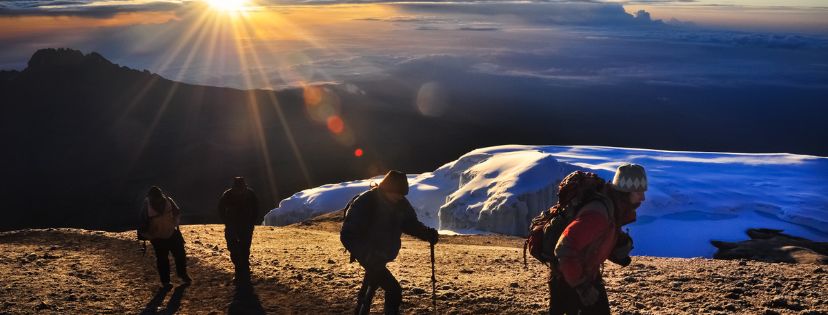 Mount Kilimanjaro : Reasons why this is your ultimate African Adventure - Introduction Tanzania, nestled in the heart of East Africa, is home to one of the world’s most iconic natural wonders…
Mount Kilimanjaro : Reasons why this is your ultimate African Adventure - Introduction Tanzania, nestled in the heart of East Africa, is home to one of the world’s most iconic natural wonders… 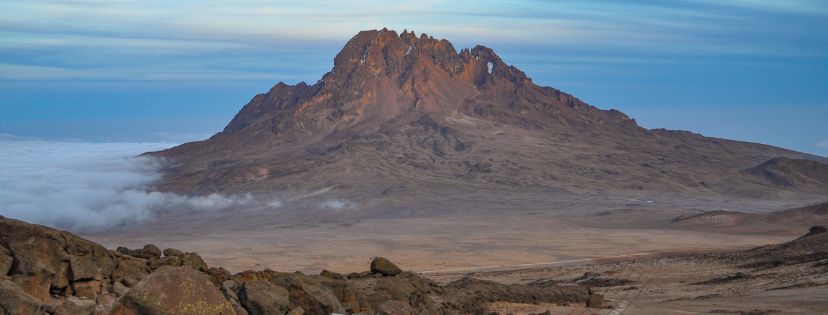 Mount Kilimanjaro: Climbing the Barranco Wall —What to Expect - Introduction to Mount Kilimanjaro One of the seven summits of the world, Mount Kilimanjaro, demands no justification as ink from…
Mount Kilimanjaro: Climbing the Barranco Wall —What to Expect - Introduction to Mount Kilimanjaro One of the seven summits of the world, Mount Kilimanjaro, demands no justification as ink from… 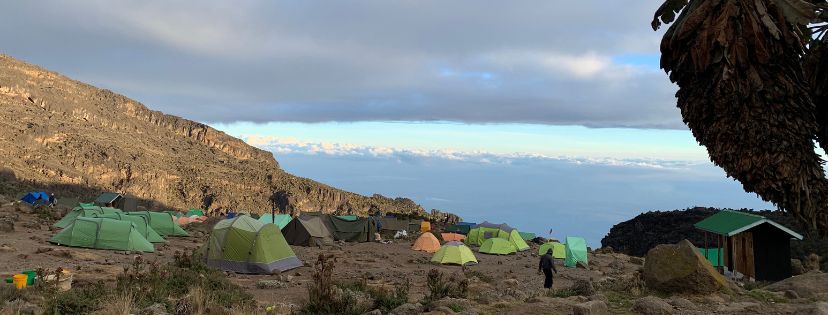 Mount Kilimanjaro : Why Machame Route is the best to climb! - Introduction Mount Kilimanjaro, an evergreen ticket to the stairs of divinity, stands at the roof of Africa. As some may…
Mount Kilimanjaro : Why Machame Route is the best to climb! - Introduction Mount Kilimanjaro, an evergreen ticket to the stairs of divinity, stands at the roof of Africa. As some may…

